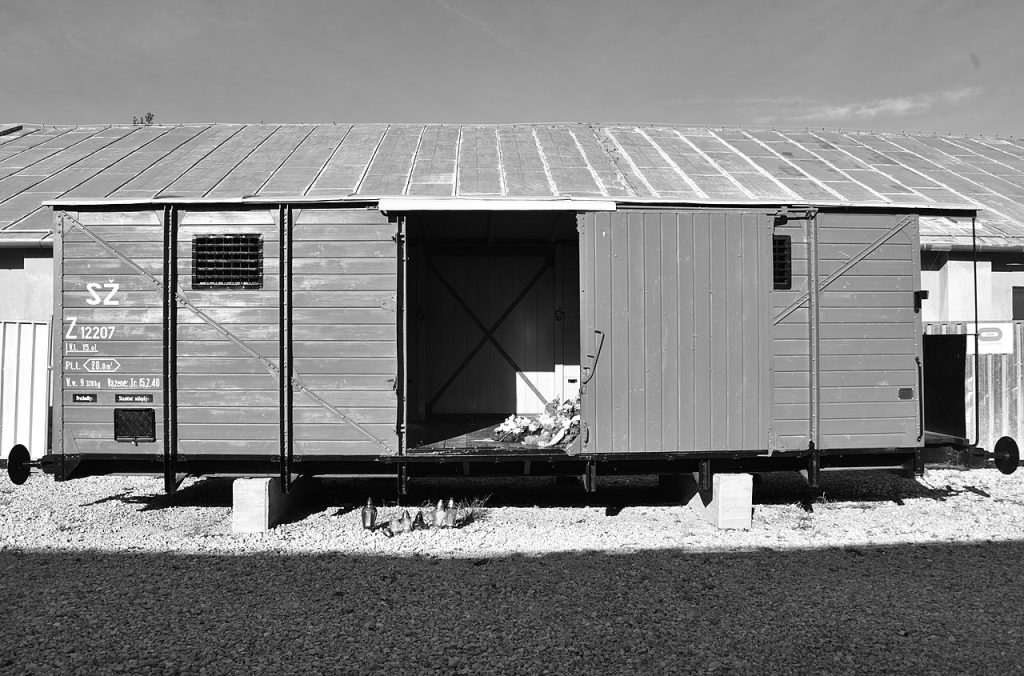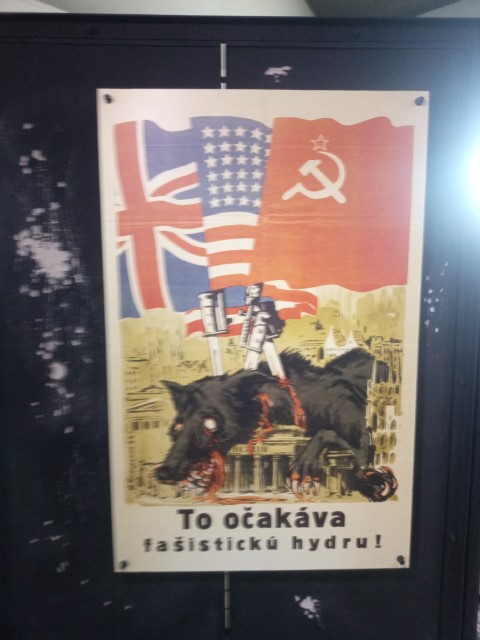Introduction
Overview of the Sered Concentration Camp Museum
Nestled in the town of Sered, Slovakia, the Sered Concentration Camp Museum stands as a poignant reminder of the harrowing past. Originally established as a labor camp during WWII, it has been transformed into the country’s first dedicated Holocaust memorial museum. During my visit, I was struck by its blend of history and solemn reflection.
Purpose of the Visit
The purpose of visiting the Sered Holocaust Museum goes beyond mere curiosity. Here are a few reasons why this site deserves attention:
- Education: To learn about the realities of the Slovak Holocaust and the impact of anti-Semitism.
- Remembrance: To honor the victims of the concentration camp and understand their stories.
- Reflection: To confront the darker aspects of our history, fostering compassion and understanding.
As I walked through the museum, I felt a mix of sadness and reverence, driving home the importance of remembering these events.
Historical Context
Background of the Slovak Holocaust
The Holocaust in Slovakia unfolded tragically following the country’s independence in March 1939. The rise of nationalist sentiments fostered an environment where anti-Semitic laws began to flourish.
Key Figures and Events
Jozef Tiso, the leader of the Hlinka Slovak People’s Party, played a pivotal role during this era. His regime laid the groundwork for systemic persecution.
Jozef Tiso and the Hlinka Slovak People’s Party
Under Tiso’s administration, laws enacted stripped Jews of their rights, paving the way for the establishment of labor and concentration camps, including Sered.
Anti-Semitism and Anti-Jewish Laws

Ot was a drastic shift, as Jews were removed from public offices; regulations effectively marginalized the Jewish community.
Role of the Hlinka Guards
The Hlinka Guards emerged as enforcers of these laws, instigating violence against Jews and contributing to widespread fear and repression. This historical backdrop is essential for understanding the significance of the Sered Holocaust Museum today, as it preserves the memory of those who suffered through these dark times.
The Sered Concentration Camp
Establishment and Function
The Sered Concentration Camp was established in September 1941 under the orders of Jozef Tiso’s regime. Originally a labor camp, its primary function was to exploit Jewish labor for state projects while also serving as a transit station for deportations.
Labor Camp and Transit Station
Inmates were tasked with various forms of labor, such as:
- Metalwork and carpentry
- Making concrete pipes
- Raising Angora rabbits for fur
Simultaneously, it functioned as a transit camp for thousands awaiting deportation.
Deportations to the East
From March 1942, the camp became a key player in the mass deportations. Nearly 60,000 Jews were sent eastward, with about 5,000 dispatched from Sered, most of whom perished.
Key Events
Throughout its operation, significant events shaped the history of the camp, including local uprisings and systematic persecutions that starkly depicted the broader atrocities of the Holocaust.
The Slovak National Uprising
In August 1944, many remaining prisoners were freed amidst the Slovak National Uprising, where some joined the revolt to fight against fascist forces. This act of defiance highlighted the importance of resistance, even in dire circumstances.
Post-Uprising Context

After the uprising was brutally suppressed, the camp saw drastic changes. It was reactivated by German forces, further cementing its role in the tragic narrative of Slovakia during WWII. What remains today is a solemn reminder of this history, making the Sered Holocaust Museum a vital site for remembering and reflecting on the past.
The Transformation into a Museum
Development of the Sered Holocaust Museum
The transformation of Sered from a labor camp into a Holocaust museum began gaining traction around 2015. Initiatives to restore the camp’s barracks and develop educational exhibits were driven by a commitment to ensure that the harrowing history was not forgotten.
Official Opening and Current Exhibition Spaces
The museum officially opened to the public, and as I walked through the four currently operational exhibition spaces, I was struck by the depth of stories conveyed through photographs, artifacts, and personal accounts—each step resonating with the lives once lived there.
Future Plans for the Museum
Plans for the future include expanding the museum into the fifth barrack, which aims to cover even more aspects of the Slovak Holocaust. The ongoing development ensures that this crucial piece of history remains a living resource for visitors eager to learn and reflect. Whether you are a seasoned history buff or a first-time visitor, the Sered Holocaust Museum is a place of profound importance that I highly recommend exploring.
Museum Exhibitions
Overview of the Main Exhibitions
As I explored the Sered Holocaust Museum, I was captivated by its comprehensive exhibitions, each telling powerful stories of the past. These displays not only document the horrors faced by Jews and other marginalized groups but also educate visitors about the broader consequences of anti-Semitism.
First Barrack: Development of Anti-Semitism
The first barrack detailed the evolution of anti-Semitism in Slovakia, showcasing the legal and social frameworks that allowed such hatred to flourish. It was sobering to see how systemic discrimination grew from rhetoric into devastating policies.
Second Barrack: Labor Camps in Slovakia
Moving to the second barrack, I was confronted with the harsh realities of labor camps throughout the country. This section highlighted the dehumanizing conditions faced by inmates, alongside their struggle for survival.
Third Barrack: History of the Sered Camp
The third barrack offered an in-depth look at the Sered camp’s history itself. Here, I discovered personal narratives and the stark facts of daily life within the camp, which further illustrated the resilience of those imprisoned.
Fourth Barrack: The Final Solution
In contrast, the fourth barrack was a somber reminder of the grim fate of Slovak Jews, focusing on the unfolding of the Final Solution. The chilling statistics and survivor testimonies offered an emotional depth that left a lasting impact on me.
Special Features of the Exhibits
Throughout the museum, special features engage visitors in unique ways, including:
- Multi-media presentations that enhance the storytelling
- Interactive panels that urge deeper reflection
Life-Size Reconstructions
One of the most striking aspects was the life-size reconstructions replicating workshops and living quarters. I felt transported back in time, visualizing what daily existence might have been like for the inmates.
Artifacts and Personal Stories
Artifacts displayed throughout the museum, such as belongings and personal items, added profound context to the stories told. Each item served as a poignant reminder of the individual lives affected by the Holocaust.
Overall, my experience at the museum was not just educational; it was an emotional journey through history that emphasizes the importance of remembrance and reflection.
Visiting the Museum
Location and Access
Located in the small town of Sered, approximately 30 miles northeast of Slovakia’s capital, the museum is accessible by car and is straightforward to find. I recommend driving, as public transport options are limited, and a scenic walk from the station isn’t particularly inviting.
Admission Fees and Opening Hours
Admissions are budget-friendly; tickets were priced at 7 euros for adults and 3 euros for students and seniors during my visit. The museum is open Monday to Friday from 8 a.m. to 3 p.m. and Sundays from 9 a.m. to 4 p.m., but it’s closed on Saturdays.
Visitor Experience and Recommendations
My experience at the Sered Holocaust Museum was both poignant and enlightening. Here are a few tips if you’re planning a visit:
- Allocate ample time: I spent about two hours, but I recommend at least three to fully immerse yourself in the exhibits.
- Engage with the staff: They were incredibly helpful, providing insights that enhanced my understanding.
- Be prepared for emotions: The stories are heavy, so give yourself time to process what you learn.
This museum is a must-visit for anyone wanting to grasp the depth of Slovakia’s Holocaust history.
Reflection on Dark Tourism
Importance of Dark Tourism in Understanding History
Visiting places like the Sered Holocaust Museum deeply impacted my understanding of history. Dark tourism is not merely about visiting sites of tragedy; it is an opportunity for us to confront the past, learn valuable lessons, and foster empathy for those who suffered. It encourages visitors to reflect on the consequences of hatred and the importance of tolerance.
The Role of Museums in Holocaust Remembrance
Museums play a critical role in preserving the memory of the Holocaust. They serve as educational platforms, ensuring that the stories of victims and survivors are told. During my visit, I was reminded that these institutions not only commemorate suffering but also advocate for peace. By sharing personal accounts and artifacts, they challenge future generations to resist ignorance and hatred.
Overall, my experience reinforced the belief that understanding dark chapters of history is vital in promoting a more compassionate world.
Conclusion
Summary of Insights Gained
Visiting the Sered Holocaust Museum profoundly impacted my understanding of the Holocaust’s complexities in Slovakia. The displays highlighted the layers of suffering experienced by not only the Jewish community but also the Roma. Each artifact and story served as a powerful reminder of the past, urging us to reflect on our collective responsibility to remember.
The Need for Continued Education on Holocaust History
The importance of educating ourselves on Holocaust history cannot be overstated. Museums like Sered play an essential role in turning the pages of history, ensuring that we do not forget the atrocities committed. By sharing these narratives, we foster empathy and understanding in future generations, fighting against the tides of hatred that can so easily resurface.
